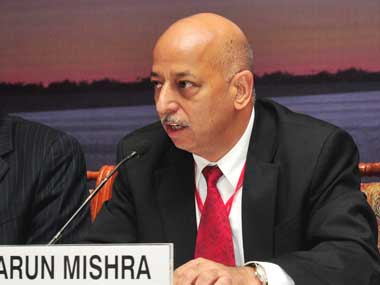These are hard times at India’s safety regulator DGCA’s offices in Jor Bagh. The incumbent Director General is leaving in a fortnight, a suitable replacement is yet to be found for him and it is possible that the office will remain headless for some time.
Just when there is a change of guard, the DGCA is so short on qualified personnel that it has now agreed to hire some from private airlines at unprecedented salaries. And all this is happening when a dreaded safety audit of Indian aviation by US authorities is scheduled for later this week.
The current Director General, Arun Mishra, has decided to take up a much coveted assignment: he will be taking over as the Regional Director (Asia Pacific) of Internatinal Civil Aviation Organisation (ICAO). This is a four year assignment where Mishra will be based in Bangkok. A suitable replacement for Mishra is needed soon since his last day in office is December 31. The names of several candidates, including a joint secretary in the Ministry of Civil Aviation and a top Air India functinary have been doing the rounds as his successors but no decision has been taken as yet.
[caption id=“attachment_1276725” align=“alignright” width=“380”]
 The current Director General, Arun Mishra, has decided to take up a much coveted assignment. PIB[/caption]
The current Director General, Arun Mishra, has decided to take up a much coveted assignment. PIB[/caption]
Misra’s departure comes just when the US safety regulator, Federal Aviation Administration (FAA), is scheduled to begin its three day safety audit later this week.
The second audit by FAA in as many months comes after it raised as many as 33 safety concerns on the way Indian aviation functions in September.
These included existence of large number of vacancies in top technical posts like those of Joint Directors General and Deputy Directors General, at a time when air traffic in India was growing at a rapid pace. DGCA had 421 employees till July this year as against sanctioned staff strength of 574.
Impact Shorts
More ShortsFAA had also adversely commented on the conduct of the regular training programmes, including those for pilots, engineers and cabin crew, besides lack of manuals on certain important safety issues. It had also highlighted faults in the implementation of safety norms by airlines.
After the September FAA audit, DGCA had made it mandatory for non-scheduled operators to go through a one-time process of comprehensive checks before flying overseas. This means all business jets and charter flights except those owned by individuals will have to go through such checks, where a 200 page long list of requirements will need to be satisfied. Else they cannot charter flights for overseas destinations.
Also, scheduled and non-scheduled operators were asked to first get permission from the DGCA before taking aeroplanes abroad for changing seat configurations or adding any equipment to aircraft which is not prescribed in the aircraft manual.
After the first audit by FAA, DGCA had somehow avoided a safety downgrade but now, once again an FAA audit is nearing. This time around too, Mishra has dismissed the possibility of a downgrade, saying several corrective measures, like filling up of senior-level vacancies, have already been taken.
Well, these corrective measures mean the Government has now been forced to agree to a whopping Rs 1.4 crore per month in salary payouts to full time flight inspectors. Twenty such inspectors have been hired from private airlines, with monthly remunerations of anywhere from Rs 4 lakh to Rs 10 lakh.
But will hiring expensive manpower help? The results of the FAA audit will be known in a few months. Meanwhile, a bill to replace DGCA with a fully autonomouys body, the Civil Aviation Authority, is pending approval of Parliament for months. The CAA is expected administer and regulate civil aviation safety, manage safety oversight over air transport operators, air service navigation operators and operators of other civil aviation facilities.
Issues relating to consumer protection and environment regulations in civil aviation sector would also be addressed by the CAA.
It is obvious that urgent reforms are needed in safety oversight procedures and in fact in the way the safety regulator itself works in India. ends
)